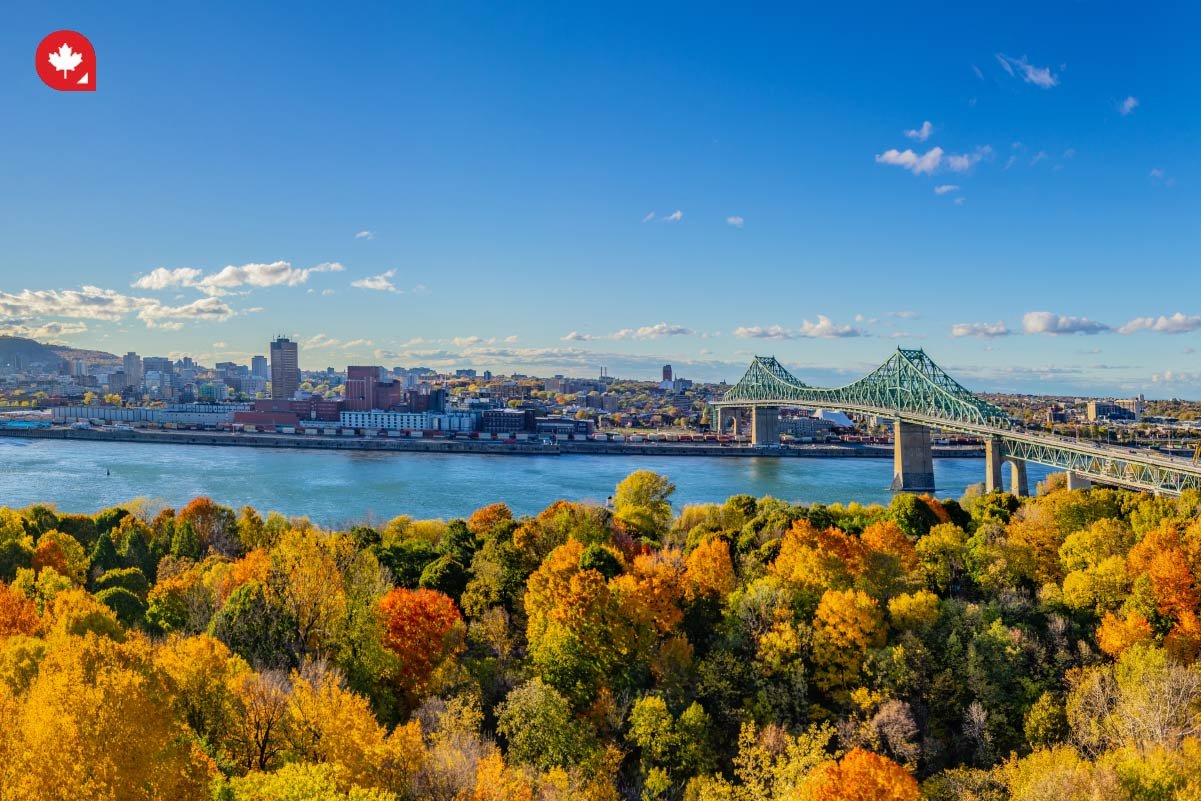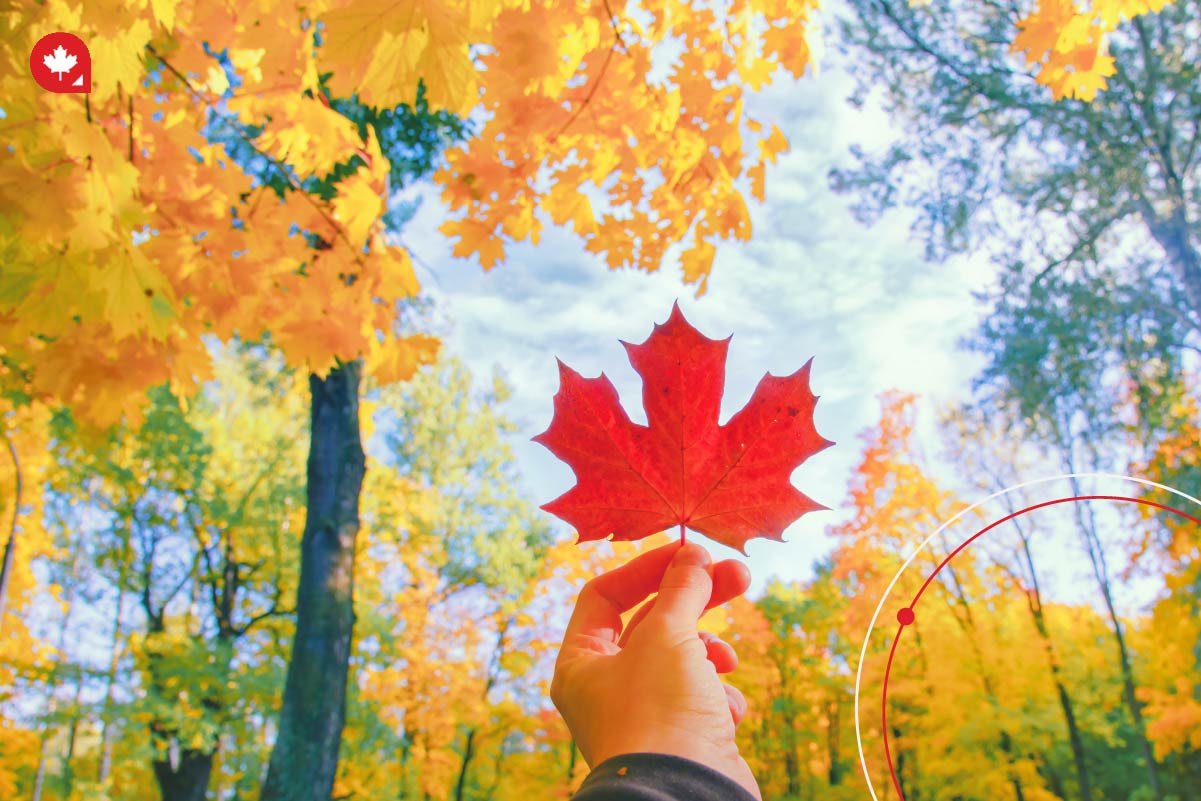Fall in Canada is a magical time of year that captivates both locals and newcomers alike. As the leaves begin to change and the air turns crisp, the country transforms into a vibrant canvas of red, orange, and gold. For those looking to move to Canada or simply explore its autumnal beauty, understanding the unique aspects of this season can enhance their experience and help them prepare for the changes ahead.
From the official start of fall marked by the autumnal equinox to the cozy comfort foods and festive celebrations, there's much to discover about this enchanting season in Canada. Visitors and new residents will find themselves immersed in a world of shorter days, harvest activities, and breathtaking natural scenery. Whether it's embracing fall fashion, participating in traditional holidays, or witnessing the science behind the changing colors, Canada's autumn offers a rich tapestry of experiences that showcase the country's diverse landscapes and cultural heritage.
Fall's Official Start: The Autumnal Equinox

Understanding the Equinox
The autumnal equinox marks the official start of fall in Canada. This astronomical event occurs when the sun's direct rays are exactly over the Earth's equator. It happens between September 21 and 24 each year, with the 2024 fall equinox taking place on Sunday, September 22. The word "equinox" comes from Latin, meaning "equal night," as day and night are nearly equal in length during this time.
Cultural Significance in Canada
The fall equinox has deep cultural roots in Canada. It coincides with harvest celebrations and marks a time of transition. Many Canadians embrace this period as an opportunity to reflect, reset, and prepare for the quieter, darker season ahead. The equinox also signals the beginning of prime viewing time for the aurora borealis in northern parts of the country.
Astronomical vs. Meteorological Fall
Fall in Canada can be defined in two ways: astronomically and meteorologically. Astronomical fall begins with the autumnal equinox, typically around September 22, when Earth's tilt causes the sun's rays to aim directly at the equator. Meteorological fall, however, starts on September 1 and includes September, October, and November. This fixed-date approach helps meteorologists gather consistent seasonal data for agriculture, commerce, and other purposes.
How Latitude Affects Fall Experiences
Canada's vast latitudinal extent results in diverse fall experiences across the country. Northern regions experience shorter, cooler summers and very cold winters, while southern areas enjoy hot summers and cold, snowy winters. Coastal areas like Vancouver have milder temperatures compared to interior locations like Regina, Saskatchewan, where temperature variations are more extreme. These differences affect the timing and intensity of fall colors and weather patterns throughout the country.
Fall's Impact on Wildlife and Nature
Fall significantly impacts Canadian wildlife and nature. As temperatures drop, many animals prepare for winter by migrating or storing food. Some species thrive in post-fire environments, while others struggle with habitat loss and food shortages caused by wildfires. The changing season also affects predator-prey dynamics and can disrupt ecosystems. Overall, fall in Canada represents a crucial transition period for both flora and fauna as they adapt to the approaching winter months.
Fall Weather Phenomena in Canada
Indian Summer Explained
Indian summer in Canada is a period of unseasonably warm, dry weather that occurs in autumn. This phenomenon typically takes place from mid-September to late October, bringing a final burst of warmth before winter sets in. During this time, the foliage in Canada's forests begins to glow in shades of purple, vermilion, gold, and copper, creating a breathtaking display. The color spectacle is most impressive in the eastern provinces of Ontario and Quebec, attracting thousands of "leaf peepers" who travel to enjoy the colorful forests.
First Frost Dates Across Provinces
First frost dates vary across Canada due to its vast geographical expanse. Generally, the further north the location, the earlier the first frost occurs. These dates are crucial for gardeners and farmers to plan their activities. Environment Canada provides frost date information for various regions, but it's important to note that these are average dates and can fluctuate yearly. Local microclimates, created by factors such as hills, valleys, and urban heat islands, can also influence frost dates within smaller areas.
Fall Storm Patterns and Preparedness
Fall in Canada brings an increased risk of severe storms, including thunderstorms, hurricanes, and early winter storms. These weather events can develop quickly and threaten life and property. To prepare, Canadians should stay informed about local weather forecasts, create a family emergency plan, and assemble an emergency kit. During storms, it's advisable to stay indoors, away from windows and doors. If evacuation is necessary, follow official instructions promptly. Remember, severe weather can occur in all regions of Canada and in all seasons, making preparedness essential.
Preparing for Shorter Days and Longer Nights
End of Daylight Saving Time
As fall progresses, Canadians prepare for the end of Daylight Saving Time. This change occurs on the first Sunday in November at 2 a.m., when clocks are turned backward one hour. This shift results in earlier sunrises and sunsets, providing more light in the morning but less in the evening. It's important to note that while most of Canada observes this change, some regions, like parts of Saskatchewan and Yukon, maintain a consistent time throughout the year.
Adjusting Sleep Schedules
The transition to shorter days can disrupt sleep patterns. To adapt, it's helpful to gradually adjust bedtimes and wake-up times in the days leading up to the time change. Exposure to natural light during the day and maintaining a consistent sleep routine can aid in this adjustment. For those traveling across time zones, it may take about one day per hour of time difference to fully acclimate.
Combating Seasonal Affective Disorder
As daylight diminishes, some individuals may experience Seasonal Affective Disorder (SAD). This form of depression typically begins in late fall and can cause feelings of sadness, fatigue, and loss of interest in usual activities. To combat SAD, people can try light therapy, maintain a healthy diet, exercise regularly, and spend time outdoors during daylight hours. If symptoms persist, it's advisable to consult a healthcare professional for additional support and treatment options.
The Changing Colors of Canadian Landscapes

Understanding the Science of Leaf Color Change
As summer fades, Canada's landscapes transform into a breathtaking display of colors. This change is due to a fascinating process called photosynthesis. Throughout the warmer months, leaves act as tiny factories, converting light into energy for trees. As temperatures cool, chlorophyll breaks down, revealing other compounds in the leaves. Carotenoids and xanthophylls create yellow and gold hues, while sugar-rich leaves produce anthocyanins, responsible for vibrant reds and purples. The timing and intensity of these colors depend on factors like temperature, precipitation, and soil moisture.
Best Places to See Fall Foliage
Canada offers numerous spots to witness this natural spectacle. The Rideau Canal, a UNESCO World Heritage Site, provides stunning views of maple and oak trees turning red and orange. Algonquin Park in Ontario is famous for its dense forests and vibrant fall colors, typically peaking in late September or early October.
For a unique experience, the Agawa Canyon Tour Train in northern Ontario offers a scenic journey through colorful landscapes. In Quebec, the Laurentian Mountains are renowned for their sugar maple trees, creating a spectacular autumn display.
Photography Tips for Capturing Autumn Beauty
To capture the magic of Canadian fall, timing is crucial. Plan your shoot around the peak of foliage color, typically from late September to mid-October. Take advantage of the golden hours - early morning and late afternoon - when the low angle of the sun enhances the colors.
Use a tripod for stability and consider using a polarizing filter to reduce glare and enhance colors. Experiment with different perspectives, from wide-angle shots of vast landscapes to close-ups of individual leaves.
Remember, patience is key, as weather conditions can greatly impact the quality of your photos.
Embracing the Fall Harvest
Popular Canadian Fall Produce
Fall in Canada brings a bounty of seasonal fruits and vegetables. Pumpkins take center stage, alongside potatoes, carrots, turnips, and gourds. Cruciferous vegetables like broccoli, cauliflower, and Brussels sprouts thrive in the cooler climate, offering tender and sweet flavors. Apples, pears, and plums are abundant, while some summer fruits and berries remain available in September. Root vegetables, including beets, parsnips, and sweet potatoes, are also in season during autumn months.
Farmer's Markets and Local Food Initiatives
Farmer's markets play a crucial role in Canada's food system, connecting local producers directly with consumers. These markets promote sustainable practices, support local economies, and offer fresh, diverse produce often unavailable in large chains. They also help preserve biodiversity and cultural traditions. Various initiatives, such as nutrition coupon programs in Nova Scotia, British Columbia, and Quebec, aim to improve access to fresh, local food for all community members, regardless of socioeconomic status.
Fall-inspired Recipes and Cooking Tips
Autumn inspires comforting dishes that celebrate seasonal ingredients. Try making pumpkin granola muffins, caramel apple waffles, or a hearty autumn vegetable soup. For a twist on classic comfort food, experiment with autumn vegetable poutine or a fall vegetable and chickpea curry. These recipes showcase the rich flavors of Canadian fall produce while providing warmth and nourishment during the cooler months.
Fall Tourism in Canada

Best Fall Road Trip Routes
Canada offers stunning fall road trip options. The Sea to Sky highway in September provides accessible trails and vibrant foliage. The Icefields Parkway boasts pleasant weather and wildlife viewing. Algonquin Park's maple-rich forests burst with color from mid-September. The Cabot Trail in Nova Scotia showcases fiery reds and golden yellows in early October. Gros Morne National Park offers breathtaking views and cultural events in late September.
Autumn Festivals and Events
Fall brings numerous festivals across Canada. The Apple Harvest Festival in Ontario celebrates family fun and outdoor adventures. Nova Scotia's Celtic Colors International Festival showcases music and dance. Culture Days, running from September to October, offers arts and cultural events nationwide. The Kitchener-Waterloo Oktoberfest, North America's largest Bavarian festival, features traditional beer gardens and lively parades. Wine enthusiasts can enjoy the Fall Okanagan Wine Festival in British Columbia.
Off-season Travel Benefits and Tips
Traveling to Canada in fall offers unique experiences at lower prices. Canadian National parks are less crowded, allowing for intimate wildlife encounters. Shoulder season months (May, June, September, October) provide comfortable temperatures for exploring. Off-season travel means discounts on airfare, accommodations, and activities. It's an ideal time for socializing with locals and enjoying special events like the Toronto International Film Festival. Fall also offers spectacular foliage viewing and opportunities to see iconic Canadian wildlife.
FAQs
Is Fall a Good Time to Move to Canada?
Yes, fall can be a good time to move to Canada. Here's why:
- Pleasant Weather: Fall offers mild temperatures and beautiful scenery, making it a comfortable time to settle in.
- School Starts: If you have children, fall aligns with the start of the school year, making it easier for them to adjust. Learn more about education in Canada.
- Job Market: Many employers hire in the fall to fill positions that have become vacant after the summer. Learn more about the in-demand jobs in Canada
- Less Competition: While there are still plenty of people moving to Canada in the fall, it's generally less crowded than the peak seasons of spring and summer.
Which Canadian Holidays or Special Days Are Celebrated During Fall in Canada?
Thanksgiving is celebrated on the second Monday of October, Halloween is on October 31st and Remembrance Day is observed on November 11th.




